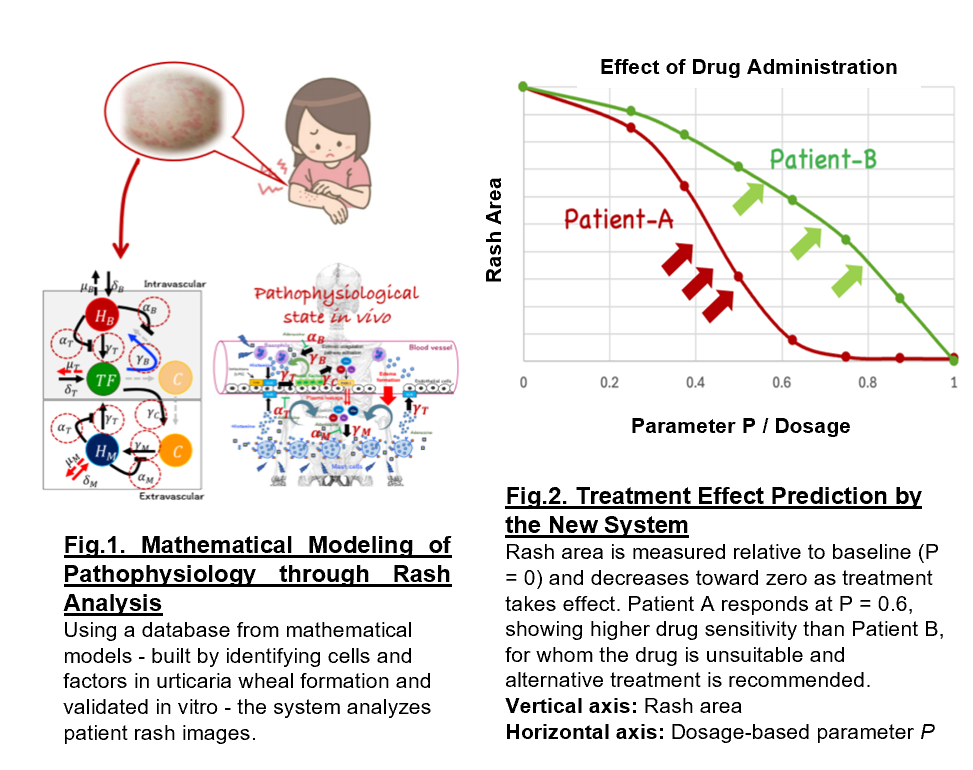Available Technologies
System for Estimating Pathophysiological Conditions of Rash Shapes
A system using rash “shapes” to estimate internal states and predict disease status and drug effects via a mathematical model
Background
In dermatology, rash shape is a key diagnostic clue, but conventional methods often require invasive tests like serum sampling or biopsies. Urticaria, a human-specific disease, is classified by rash morphology, yet diagnosis and treatment remain limited and mostly symptomatic, highlighting the need for efficient, personalized therapies.
Description and Advantages
Kyoto University researchers developed a system that models physiological states from rash images and created an in-silico database linking rash shapes to parameters. By inputting a rash image, the system estimates underlying physiological changes (Fig. 1). Furthermore, a mathematical "treatment-support program" was developed, enabling non-invasive diagnosis, treatment guidance, and drug efficacy prediction without invasive tests (Fig. 2).
▶ Mathematical model incorporating drug mechanisms of action
By simply capturing an image of a rash, the system can predict drug efficacy.
▶ Diagnosis and treatment-effect prediction using only rash images
No invasive examination procedures are required.
▶ Applicable to treatment-support systems and drug efficacy evaluation
Predicts the best drugs for patients without administering them.

| Development Status |
Proven effective for analyzing chronic idiopathic urticaria. |
|---|---|
| Offer | ・Patent License ・Option for License ・Collaborative Research for - Program optimization for urticaria - Development of treatment support programs for rashes |
| Related Links | View in Japanese |
Have you found what you were looking for?
- Interested in a particular research activity
- Cannot find the information
- Have questions on how to utilize research results
Feel free to contact us and get answers to your questions.
Inquiry- TLO-KYOTO
- Available Technologies
- System for Estimating Pathophysiological Conditions of Rash Shapes
3rd Floor, International Science
Innovation Building, Kyoto University
Yoshidahonmachi, Sakyo-ku, Kyoto
606-8501 JAPAN


